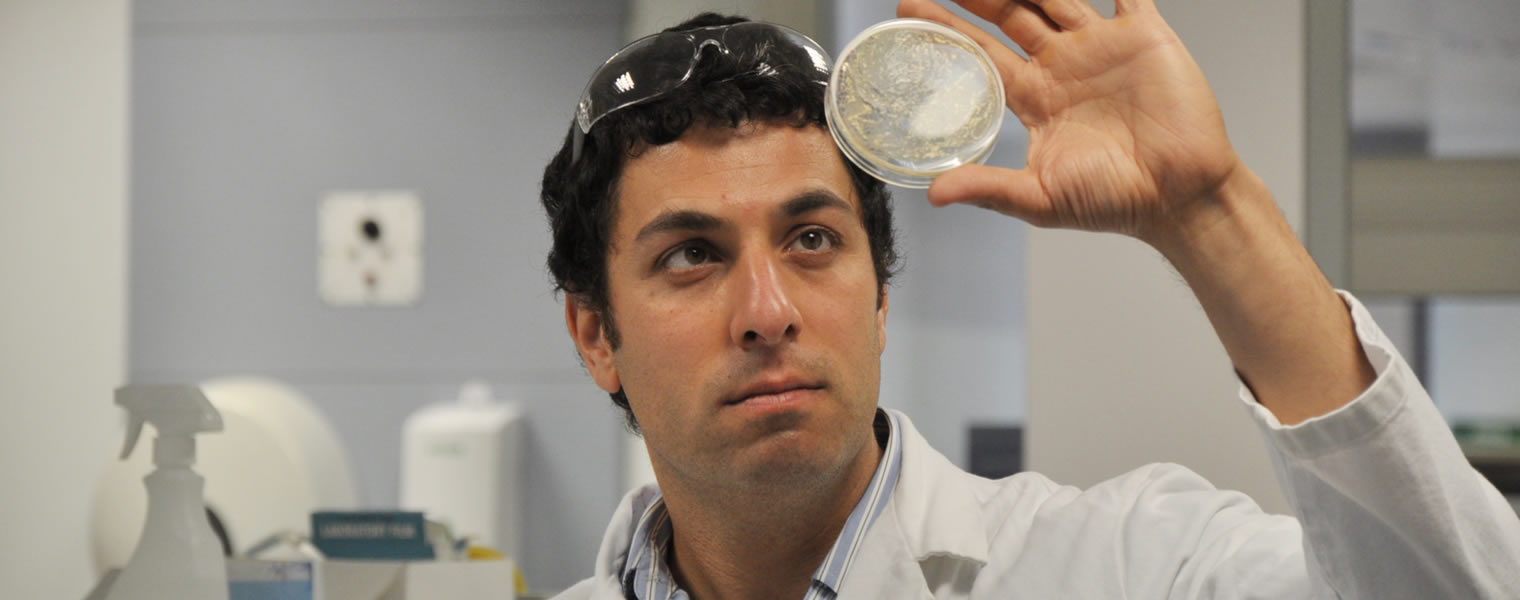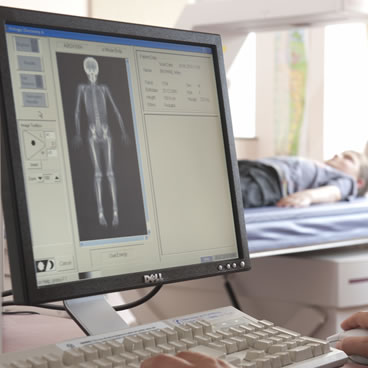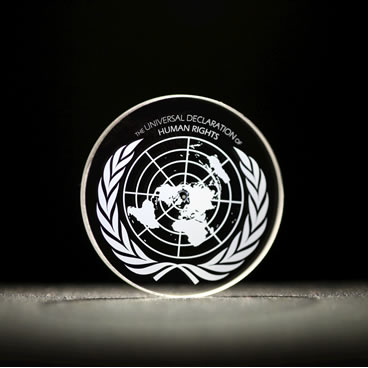Hartley News Online Your alumni and supporter magazine
Researchers at Southampton have created human cells that can stop the formation and growth of tumours by blocking the action of a key protein-protein interaction.
All cells need a blood supply to provide them with the oxygen and nutrients they require to survive. Tumours grow rapidly and outstrip the supply of oxygen and nutrients that the surrounding blood vessels can deliver. All cancers need to respond to this problem to adapt and grow in their low oxygen environment, and researchers have been looking for ways to combat this response and suffocate tumours.
In the last three years, Southampton researchers have not only discovered a molecule that prevents cancer cells from responding to a lack of oxygen, but also a means of modifying human cells so that they themselves could produce this molecule.
When cells experience low environmental oxygen, they need to adapt or die. They can adapt by switching on a protein known as HIF-1. This protein controls 300 genes that allow cells to survive in hypoxia (the term used for low oxygen conditions) by for example, causing new blood vessels to grow to increase blood supply and oxygen levels.
HIF-1 is important in embryonic development where new blood vessel formation needs to take place, but is mostly inactive in an adult as there is little need for it. Cancer switches it back on. It has been a long held hypothesis that by stopping HIF-1 working, tumours will fail to respond to their low oxygen environment, and die. But these studies have been carried out with biological research tools that eliminate the HIF-1 protein.
Ali Tavassoli, Professor of Chemical Biology at the University, has taken a different tack by finding and developing a molecule that stops HIF-1 working. “We have tried to tackle the disruption of a protein-protein interaction required for HIF-1 function. A cell has thousands of proteins that interact together. They are not bound together, but come together for a specific purpose and then fall apart, like a handshake. The HIF-1 protein is made of two parts, HIF-1 alpha and HIF-1 beta, which only come together in low oxygen conditions. Almost all processes in cells are controlled via these protein-protein interactions, including disease pathways but they’re a challenging target for the field of drug discovery, given their transient qualities.”
Our lab was the first to produce a specific HIF-1 inhibitor, to disrupt the interaction with a molecule.
Ali’s approach involves using engineered bacteria. By testing 3.2 million potential compounds, made by specially engineered E. coli, he was able to find a molecule called a cyclic peptide that stopped HIF-1 from working. As genetically modified bacteria grow so rapidly, the team were able to make and screen libraries of millions of cyclic peptides in a matter of days, leading them to discover the one cyclic peptide that would work. Such screening would otherwise have taken years.
The results will enable scientists to take a huge leap forward, as Ali explains. “The tools currently available to biologists for studying a protein-protein interactions are mainly knock out or knock down. They destroy the targeted protein in the cell. But the flaw is that proteins have multiple functions, so it is hard to accurately pinpoint a specific function. The chemical tool allows you to disrupt HIF-1 alpha and HIF-1 beta and leave protein levels intact. You can then point to the effect of that specific protein-protein interaction. If breaking apart HIF-1 alpha and HIF-1 beta has a therapeutic potential – we believe so but no-one has tested it – then we have viable evidence as to why a pharmaceutical company should spend millions on developing that therapy. The evidence base becomes much stronger.”
Ali’s lab is currently working with a major pharmaceutical company to develop the HIF-1 inhibitor and advance it towards the clinic.
Creating a genetic circuit
A specific HIF-1 inhibitor was a major breakthrough, Ali wanted to explore the possibility of equipping human cells so that they themselves could produce the molecule.
The team created a genetic circuit that produces the machinery necessary for making the HIF-1 inhibiting molecule in cells. They designed the circuit so the molecule is only produced in a hypoxic cell and only if another compound called doxycycline is also present. This allows them to control when and where the HIF-1 inhibitor is produced. They then modified human cells in the lab so that the circuit was integrated into their DNA and set about checking whether the inhibitor molecule was produced as expected.
The trial was a success. The genetic circuit makes the inhibitor molecule in these cells and prevented HIF-1 being switched on. HIF-1 alpha and HIF-1 beta had not joined together, and importantly, had also not been eliminated.
In effect, we equipped cells with the ability to fight back, to stop a key protein that is needed for cancer development and progression from functioning in these cells.
The work had also interestingly raised the possibility of adding machinery to human cells to enable them to combat disease signals. However, changing the DNA of healthy people or cancer patients is not on the cards. The tool will be used for further understanding of the role of HIF-1 and the potential development of new treatments.
Ali had started down this road in response to the number of requests he was receiving for the cyclic peptide once his HIF-1 research had been published. Making the cyclic peptide is difficult and time-consuming, and his team were in danger of spending all their time servicing demands. Now, they have overcome the problem.
“The cell itself makes the compound from the building blocks already available in that cell. That is quite neat. We should be able to send cancer biologists DNA from which they can generate their own cell lines that produce our HIF-1 inhibitor, which should make a huge difference in terms of furthering understanding HIF-1 function in cancer. For example, there is a lot of evidence that shows when you treat patients with radiation, the cells that are left behind activate HIF, resulting in recurring cancers. Now you can test what happens if these cells can’t activate HIF-1” says Ali.
A unique multidisciplinary approach
Much of Ali and his team’s success is down to their multidisciplinary approach. Ali set up the lab 10 years ago with the backing of a very supportive chemistry department.
The department has given me everything I need to realise this vision of a multidisciplinary environment where people from different scientific backgrounds come together to work on a problem.
“We have molecular biology labs to engineer our E. coli, chemistry labs to synthesise our inhibitors, biophysics instrument rooms to characterise our inhibitors, and cell culture labs to grow cancer cell lines and test our ideas all the way across several disciplines. That pipeline in an academic setting is quite unique and gives us significant advantages,” comments Ali.
It also provides excellent training for the University’s students and postdocs, who with their multidisciplinary training, tend to find jobs very easily. Currently, one of Ali’s researchers is Andrew Foster (MChem Chemistry with Medicinal Sciences, 2013) and previous students have included Abigail Male (MChem Chemistry, 2010; PhD Chemistry, 2014), Charlotte Mardle (MChem Chemistry, 2011; PhD Biomedical Science, 2014), Jaime Townend (MChem Chemistry with Medicinal Sciences, 2011; PhD Chemistry, 2016) and Ishna Mistry (MNatSci Natural Sciences, 2012; PhD Chemistry, 2016).
Ali is also excited by the prospect of the new Cancer Immunology Centre: “The Immunology Centre will be fabulous. There is a lot of innovative work that chemistry and chemical biology can bring to immunology, and we will drive that forward. There is tremendous potential for interfacing chemistry with the world-leading work that is going on there.”
Ali and his team have developed a technique with a huge amount of potential, and not just for further exploring the role of HIF-1 in cancer. There are three other proteins, all equally hard targets, which are critical for cancer: KRAS, MYC, and P53. Around 90 per cent of all pancreatic cancers are driven by KRAS mutation, and 60 per cent of lung cancers. Last year the team was given a Cancer Research UK grant to tackle KRAS.
The platform they have developed can identify cyclic peptide inhibitors of any protein-protein interaction, and beyond cancer has been used in relation to HIV budding. Ali states that they have eight separate projects with pharmaceutical companies using this platform to identify inhibitors of a variety of protein-protein interactions.
Ali and his team have created tools with undoubted significant impact in terms of enhancing scientists’ understanding of this area, and continue to work to develop a cure.
Find out more about the Centre for Cancer Immunology, keep up-to-date on the campaign progress and help us make a difference in the fight against cancer this World Cancer Day.



